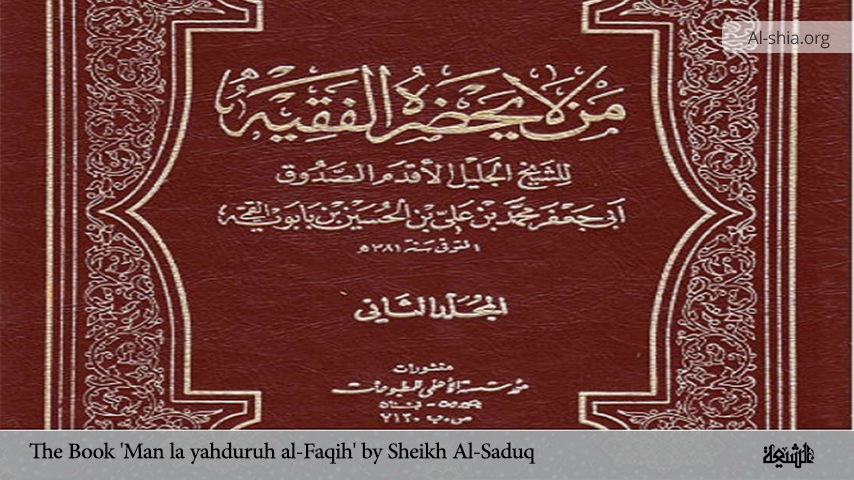In continuation of the discussions on the concept of Mahdi in Shia Islam, we shall focus on other relevant areas of the topic here.
C) The concept of Intizar
Complementary to the doctrine of the greater Occultation is the notion of Intizar, or the expectation and awaiting of the Hidden Imam’s return. Intizar is a state of expectancy for the reappearance of the Hidden Imam; it is a doctrine of hope and trust that he will one day reappear and establish an ideal Islamic society. The expectation of release from suffering, grief and sorrow (Intizar al-Faraj) is enjoined upon the believers. The doctrine of Intizar has important connotations for the personal and political lives of the Twelver Shi’ite faithful during the Occultation of the Imam: their personal duties as believers vis-à-vis God and their attitude to the question of religious leadership and earthly government.
The most comprehensive collection of the Twelver Shi’ite narratives on Intizar was made by the Shi’ite scholar Muhammad Baqir Majlisi in his encyclopaedic work on Shi’ite traditions, Bihar al-Anwar. (1) The disappearance of the Mahdi and his Occultation is presented in the traditions as a severe test for the Shi’ite faithful, bringing with it much hardship and many schisms. The Shi’ites will undergo a process of sifting in which the unbelievers will be rooted out from the believers. Several traditions mention the merit of Intizar al-Faraj without specifying the nature and cause of suffering. In one tradition, the Prophet is reported to have said: “The best of all acts carried out by my people is their expectation of release from suffering, granted to them by God.”(2) Several of the eighty or so traditions on the excellency of Intizar, class it as the most noble (afdal) of all actions, and in one narrative as synonymous with worship (‘Ibada). (3)
Acts of worship… must be carried out clandestinely during the ghayba, and are more meritorious than those performed openly after the return of the Imam. One must strive to carry out all of the obligatory duties laid down in the Shari’a, which remain incumbent on the individual despite the absence of the Imam. The Twelver Shi’ites during the occultation are superior to those in the company of the Mahdi, for the simple reason that the former must contend with tyrannical regimes, against which they move neither tongue nor hand nor sword in opposition. (4) The expectation of salvation through the rise of the twelfth Imam is dominant throughout the Occultation. The persistent faith in freedom from grief through his appearance requires the Shi’ites to be on the alert at all times and also to pave the way for the Imam’s reappearance.
Murtaza Mutahhari, a prominent student of Imam Khomeini and a teacher of philosophy, in his essay on the uprising and the revolution of the Mahdi, no longer treated the advent of the Lord of the Age as a sudden, impromptu event, but as the final stage in an ideologically driven revolution to establish Islam’s “ideal society”. Mutahhari conceived the coming of the Mahdi as the climax of a revolutionary struggle that in its primary stages requires the believers’ active involvement (5) during the Occultation. Unlike the Marxist theory of revolution, Mutahhari believed that Mahdi’s revolution is divinely inspired and remains contingent upon the alertness and action of the community. Thus, the establishment of a just state became for Mutahhari and like-minded activists a legitimate first step toward the final revolution of the Mahdi.
The well-known work Wilayat-e faqih (authority of the jurist) was clearly meant to provide an answer to the most urgent of these concerns. In this work, Imam Khomeini advocated the necessity for instituting an Islamic government in the absence of the Hidden Imam in order to prepare the terrain for the Rise of the Mahdi. He argued that while the Imam is in Occultation, preserving the essence of Islam and defending its sacred values should be accomplished by an Islamic government under a Guardian Jurist to be upheld as the Imam’s vicegerent. In support of this doctrine, Imam Khomeini cites one of the Hidden Imam’s decrees in which the ‘ulama were upheld as “proofs” (Hujaj) of the Lord of the Age.
Ali Shari’ati (1933-1977), a major ideologue of revolutionary Shi’ism, in a pamphlet entitled “expectation, a school of protest”, regarded the End of Time as nothing but an “ultimate revolution” for humanity. The Mahdi’s revolution could not come about without Muslims arriving at a new understanding of expectation as a way of acquiring social responsibility, working toward a just and equitable order and rejecting political oppression and cultural degradation. Complying with the Shi’ite prophecies, he repeated that the Lord of the Age will come when the entire lifespan of humanity reaches its lowest ebb of corruption, but until that time, he recommended that the community of believers should settle on the leadership of a democratically elected jurist (faqih) to serve as the Hidden Imam’s general deputy (Na’ibe ‘Aam).
A true understanding of the End, he stated, will evolve only when Muslims abandon troubling theological entanglements concerning circumstances of the resurrection (and in effect, the Occultation) and instead, develop a perspective conforming to modern social and human sciences, and based on a sociological analysis of class conflict. Shari’ati’s ideological dimensions of expectation go so far as to endorse a Marxist-inspired Islamic revolution. True expectation, according to Shari’ati, is “believing that in the life of humankind on this very earth and before death, not in the resurrection after death, history will bring about the triumph of the oppressed and destruction of the oppressors”.
D) The Return and the Rise
The future Return and Rise of the Mahdi constitute the most frequent of the Imam’s predictions and have been described in numerous traditions from the early times in Imamite history. It is believed that the Mahdi will come to fulfil the mission of all the prophets before him and complete the task of Imam Husayn (the third Imam), the great martyr of Karbala. He shall appear, according to many traditions, on the day of ‘Ashura, the day on which Imam Husayn, son of Imam Ali, was killed,(6) showing himself first in Mecca, Islam’s holiest city, where he will be joined initially by 313 believers, the number of the martyrs of Badr, then he will make his headquarters in Kufah where Imam Ali was killed and buried.
The Return as well as the Rising of the Qa’im will be preceded by signs. The theme of ‘Signs of the Return’ is one of the most developed of those that occur in collections of hadith, in both Sunnite and Shi’ite literature. Sometimes a number of chapters are dedicated to the subject. (7) The universal sign of the Return consists of the generalized invasion of the earth by Evil. There are also a great number of more specific signs listed in the compilations.
NOTES:
__________________________________________
1. Majlisi, Bihar al-Anwar, Vol. 52, Bab Fazl al-Intizar va madh al-Shi’a fi zaman al-ghayba, pp. 122-127.
2. Ibid, vol.52, P. 122.
3. Ibid . vol.52 p.122.
4. Ibid vol.52, p.122
5. Mutahhari, p.5-10
6. Mufid, p.341
7. Al-Nu’mani , Kitab al-ghayba, ch. 14, 15, 18, 21; Ibn Babuye, Kamal al-Din, ch. 47, 57, 58….

















